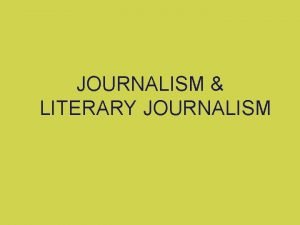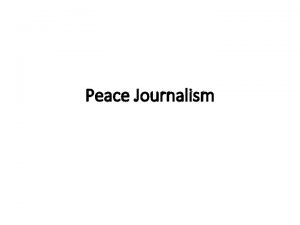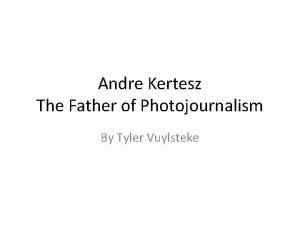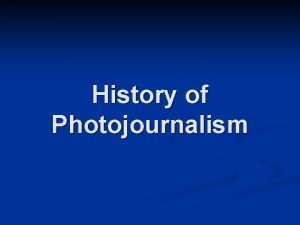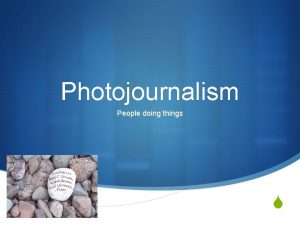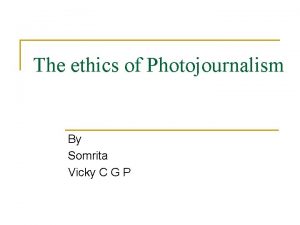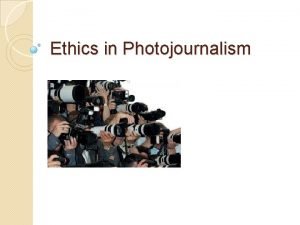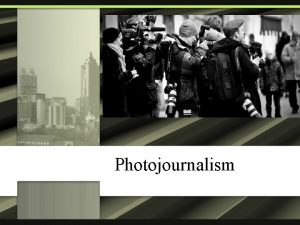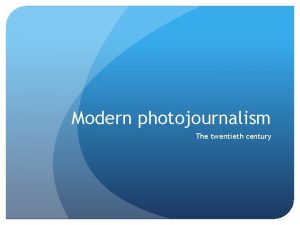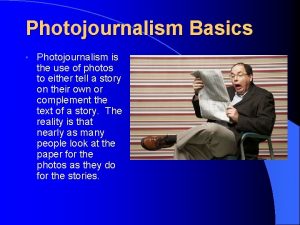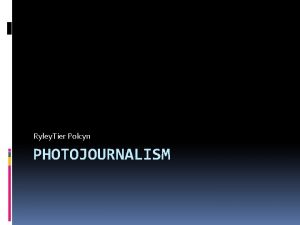Magazine Journalism Ethical Issues in Photojournalism Ethical Issues







- Slides: 7

Magazine Journalism Ethical Issues in Photojournalism

Ethical Issues Manipulation of digital images With the click of a mouse you can create a new 'truth' by changing, in an instant, the size, shape and color of the image and the distance between objects. Objects can be removed from the image, or inserted into the picture It's the composite character of the digital age. Adobe touts its "groundbreaking creative tools [that] help you achieve extraordinary results. " Extraordinary, they may be, but they may be misused by journalists to alter the truth or to mislead the public.

Ethical Issues Intrusion into privacy The development of long-range lens and the demand for attentiongrabbing photos combine to make privacy a major ethical issue. When is it legitimate to take pictures of people in private moments? Should photojournalists capture images of politicians, movie stars and other public figures in private spaces? Should photojournalists take shots of families in grief, or victims of tragedy? The public perception of the journalist and of the news media in general, has suffered from unjustified intrusions into privacy. The ethical question is: When is intrusion justified?

Ethical Issues Graphic or shocking images Points to consider: "What is the real journalistic value of the photographs? What do they prove and why are they news? Do they dispel or affirm information the public had prior to seeing the images? " By looking at the photos in terms of what they add to the news, editors should be able to determine whether publication is appropriate.

Ethical Issues Ethical guidelines Many editors and responsible news organizations refuse to publish altered photographs. Photos that have been digitally altered are now labeled montages or photo illustrations. The technology of photojournalism may have changed, but its truth-telling essence can still remain.

Ethical Issues Photojournalism Ethics Guidelines Photojournalists are responsible for the integrity of their images. We will not alter images so that they mislead the public. We will explain in the photo caption if a photograph has been staged. We will label altered images as photo illustrations. From the Society of Professional Journalists Code of Ethics: "Journalists should. . . never distort the content of news photos or video. Image enhancement for technical clarity is always permissible. Label montages and photo illustrations. " Be accurate and comprehensive in the representation of subjects.

Ethical Issues Photojournalism Ethics Guidelines Resist being manipulated by staged photo opportunities. Be complete and provide context when photographing or recording subjects. Avoid stereotyping individuals and groups. Recognize and work to avoid presenting one's own biases in the work. Treat all subjects with respect and dignity. Give special consideration to vulnerable subjects and compassion to victims of crime or tragedy. Intrude on private moments of grief only when the public has an overriding and justifiable need to see.
